How To Improve Your Long-Range Shooting and Archery Skills
Posted by Mandu Moses on Sep 20th 2024
Mastery of long-range shooting or archery requires time, practice, and commitment to learn how to control your arm and weapon perfectly. You should remember that proficiency in shooting your rifle or bow and arrow is more about the interaction of various shooting variables and less about the value of your weapon.
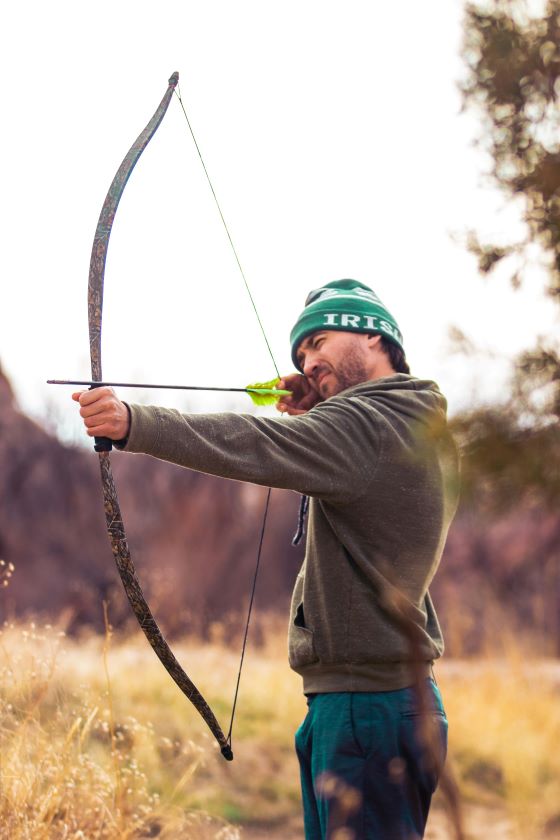
Credit: Woody Kelly
Herein, you’ll find a few secrets to improving your long-range shooting and archery skills. Let us start with the basics.
Shooting Vs. Archery

Credit: Manfred Richter
Shooting and archery are close brothers based on target-hitting practice. However, what sets them apart is the types of tools used.
Shooting is a general term that refers to the art of discharging a projectile from a weapon, such as a ranged firearm, bow, or slingshot. When dealing with firearms, it is called firing and involves pulling a trigger to initiate a bullet discharge.
Archery, on the other hand, is the practice of shooting arrows using a bow. Like any other shooting sport, archery involves using equipment and accessories to make it a success. These include bows, arrows, bracers, finger tabs, and targets to shoot at.
General Tips to Improve Your Long-Range Shooting and Archery
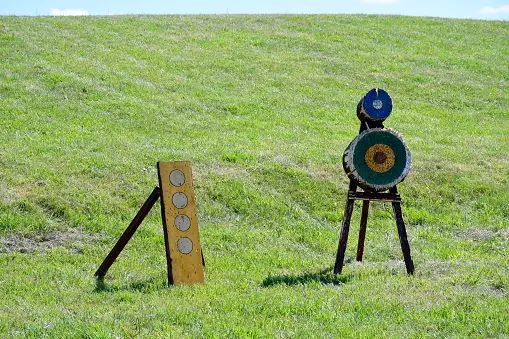
Credit: Polecam, PolglishPL!
When balancing shooting variables, you are probably the cheapest variable to adjust. That means you can easily enhance your long-range shooting skills by adjusting how you handle your gun or bow. Therefore, if you are a good shooter or archer at short distances, here are a few tips to double your shooting distances.
Get Into a Comfortable Position
The first secret to attaining your preferred shooting accuracy is to be in a comfortable and relaxing position. Ensure that you are not straining to balance on the ground. Also, stand in a position that allows you to effortlessly take the weight of your gun or bow.
Once you are comfortable, you can let the firearm or arrow point naturally at the target. This gives you a clear sight of the target, regardless of the distance. You can also adjust your position by moving the whole body instead of only your arm or torso.
Build A Strong Grip
Always keep a firm grip on the gun before firing. Curl your thumb around the firearm and relax your trigger finger on the trigger. This gives you a firm grip on the firearm and control during recoil.
Avoid placing the thumb behind the bolt or alongside the safety, as this can be challenging when dealing with larger firearms with heavier recoil.
When archery is involved, always maintain a loose grip on the bow and form a V with your thumb and index finger. Let the bow rest deep within the V, and lightly wrap your fingers and thumb around the handle.
You should also keep your fingers curved to prevent them from sticking out in the arrow’s way.
Get A Perfect View

Always focus on getting a perfect view whether you are using aiming aids such as scopes or not. Shooting with shadows or tunnel effects can cause parallax errors and put you off-target.
When using firing scopes, ensure you align the front (objective) lens with the rear (ocular) lens, with the rear lens exceeding the diameter of the front lens.
Some people prefer shooting their arrows with both eyes open, while others prefer closing one eye. You can choose any aiming technique since there is no one-size-fits-all regarding archery. However, ensure you establish your dominant eye to view the target easily and visualize where the arrow will land.
Moreover, take time to aim and release the arrow. But do not hold your position for a long time, as this increases the chances of shaking and missing the target.
Practice At Short-Range
Do not start shooting at long range if your shooting skills are still undeveloped. Before increasing shooting distances, start by fixing basic errors around your elevation and windage.
Practice shooting consistently at shorter ranges to master your firearm or bow manipulation. Once you have mastered all the shooting angles and hand controls, you can gradually increase the range.
In the case of arrow shooting, establish a consistent anchor point where the arrow feels comfortable on your face. Anchor points differ from one archer to another. Find a sweet spot to place your hand when drawing the bow, and stick to that spot for a comfortable shot.
Accessorize
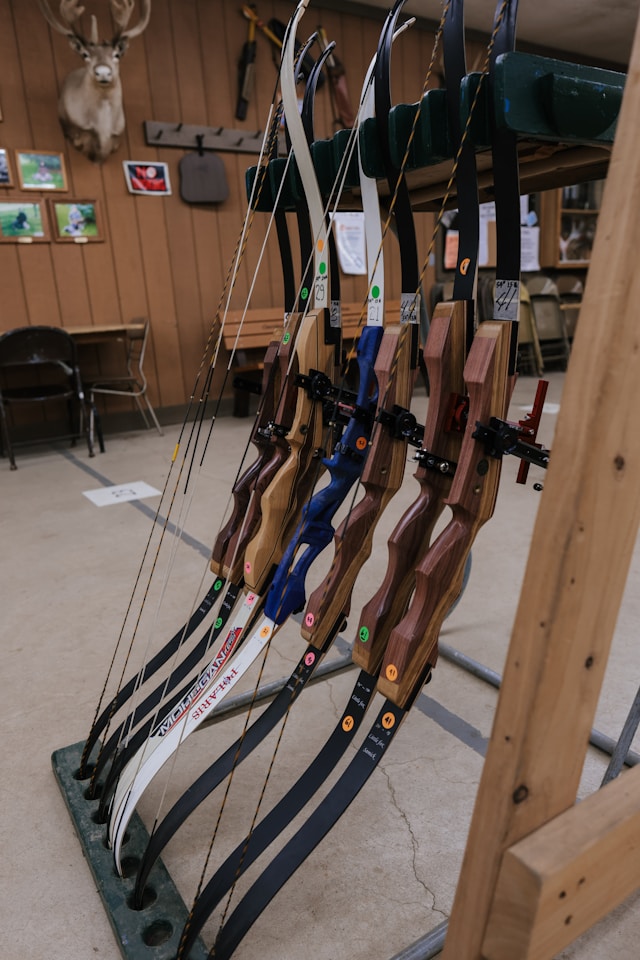
Credit: Chris Bair
Accessorizing your firearm or bow can also enhance your long-range shooting. Depending on your shooting environment, you can accessorize your gun with scopes, flashlights, aftermarket trigger upgrades, and shooting sticks. You can add arrow quivers, arm guards, and releases to keep your hands stable for archery.
Note that accessorizing your shooting equipment improves your accuracy, makes you comfortable, and minimizes accidental discharges. Therefore, always remember to choose the best accessories that fit your weapon in terms of mounting and environmental adaptability.
Study The Effect of External Factors
After addressing the above points, it is now time to deal with the external factors that might affect the speed and impact of your shot. These include the speed and direction of the wind, topography, trees, and mirage.
Learn to deliver as many rounds and arrows as possible amidst these tough conditions to grow your experience.
What To Know Before Shooting Your First Arrow
Archery is one of the exciting sports that has lasted for decades. It comes with a rush of excitement that fills your body as you contemplate hitting your first target. However, just like any other sport, archery has its own set of risks that can compromise its safety at the beginning.
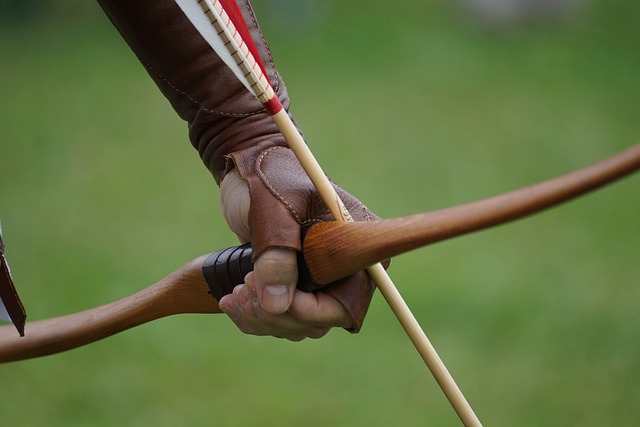
Some of the reasons that can make first-time archery inaccurate or risky include:
- Wrong Elbow Rotation: Your elbow is one of the most critical parts of your bow arm as it provides balance to the bow. It is vital to align it with your entire forearm as you draw, then rotate it straight up and down as you prepare to fire.
- Wrong Finger Placement: Avoid putting much pressure on the bowstring as it loads the arrow with too much energy. This can lead to missing the target or wrist slap. Therefore, always look at your fingers to ensure you placed them correctly before drawing your bowstring.
- Switching Anchor Points: Archery accuracy is a matter of consistency. One way of improving your accuracy is to ensure you release your shot from the same anchor point every time. Switching your anchor points with each draw will move the arrow in different directions whenever you release it.
- Weak Stance: Changing your body position as you cycle between shots weakens your stance. Remember, your stance forms the foundation of every shot. Hence, you have a high chance of missing the target if it is weak.
You can easily avoid the above risks by incorporating the following techniques in your first-time archery:
Avoid Drawing Without an Arrow
When you release the bowstring, the bow’s limbs spring back into place while converting the stored power into kinetic energy. The kinetic energy then propels the arrow into flight.
When you draw and release the bowstring without an arrow (dry-firing), all the kinetic energy goes back into the bow. Since the bow is not designed to absorb this energy, it can experience vibrations that can cause potential danger to its parts.
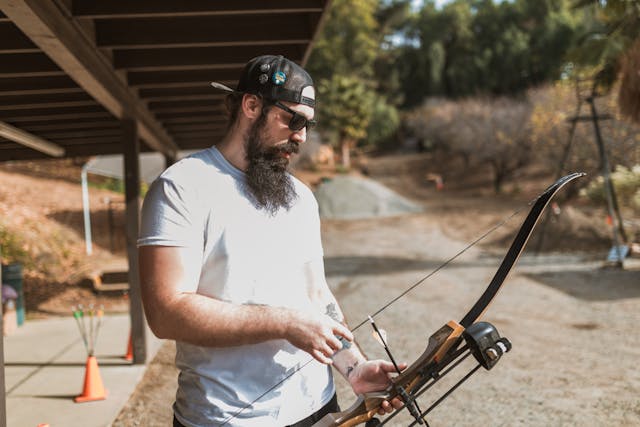
Photo by RDNE Stock project
Inspect Each Arrow Before Every Shot
Arrow inspection might seem obvious, but it is a crucial step in archery. Before nocking your arrow, inspect it for any damages that might make it unsafe. Shooting a damaged arrow can harm you since arrows carry a lot of energy when you release them.
Make it a habit to perform flex tests on your arrows before shooting. Hold them on both ends and flex them away from your body. Look and listen for dents, cracks, nicks, and splinters. Get rid of the arrows if you notice any faults.
Nock Your Arrow Properly
Failing to nock the arrow on the string properly can cause the arrow to fall off as you draw back, leading to dry fire. Also, making it too tight can cause the string not to release the arrow smoothly, leading to a misfire. Therefore, ensuring your arrow has the right nock fit before drawing is vital.
Generally, you should hear the arrow click onto the string as you nock it. Alternatively, you can seek expert advice from your local archery shop on properly nocking arrows.
Align Your Peep Sight
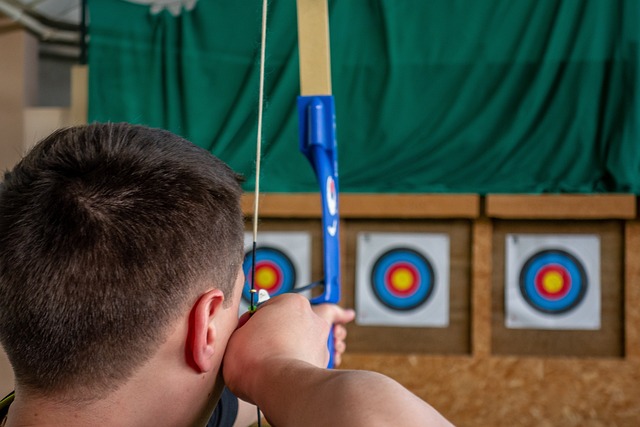
Image by Franck Barske
Some bows come with peep sights to allow you to align your sight before shooting. When using such bows, ensure the peep sight and sight housing for two concentric circles before releasing the arrow. Releasing when the two are not in the same alignment can lead to inconsistent shooting.
Bend Your Bow Arm
Arm slapping often happens when you get sloppy with your stance or have ill-fitting equipment. This can lead to bruised forearm and ego, besides causing inaccurate shooting. You can easily maneuver this challenge by bending your bow arm as you draw.
When drawing, position your bow arm at an outward and slightly downward angle away from your bow. This allows your bow arm to bend slightly, preventing the bowstring from slapping your forearm.
Practice Holding at Full Draw
Holding at full draw strengthens your arm muscles and trains your mind to focus on the target. This technique is vital in a hunting scenario where you need to wait until the target steps into a shooting lane. However, it can be challenging for beginners as it can lead to anxiety or accidental releases.
You can enhance your endurance by drawing your bow and holding it until you feel tired, anxious, or shaky. However, let the bow down without shooting instead of releasing the arrow. Doing this over time enables you to understand how it feels to hold for longer and aim while tired.
National Shooting Sports Month
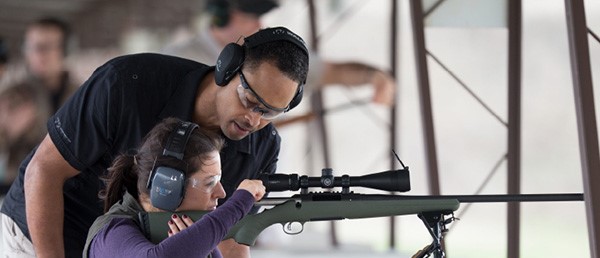
Credit: Shootingsportsmonth.org
The National Shooting Sports Foundation (NSSF) founded National Shooting Sports Month in 1961 to encourage all gun owners to participate in shooting sports and emphasize firearm safety. The NSSF has over 8,000 members and is responsible for writing gun safety and instruction standards and advocating for gun rights.
The NSSF started the National Shooting Sports Month in 2017. The one-month celebration is held every August and marks the time when American gun owners and retailers come together for target shooting. It is also the time when experienced gun owners and NSSA-certified instructors train novice gun shooters on gun safety.
How to Mark National Shooting Sports Month
National Shooting Sports Month comes with exciting events every year. As a new participant, you can enjoy a wide range of activities at the range, at home, or even in the field. Therefore, you can make this year's shooting celebrations memorable by picking one or more activities from the list below.
Try Something New
National Shooting Sports Month is the best time to learn a new shooting activity from your experienced buddies. You can sign up for a local International Defensive Pistol Association (IDPA) match to sharpen your firearm marksmanship.
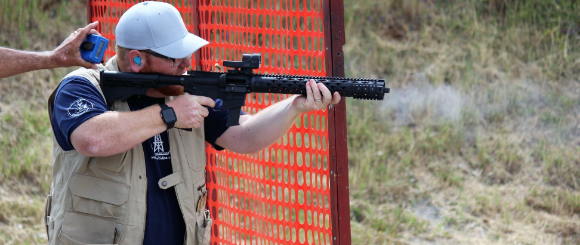
Image Courtesy: IDPA
Participate In Target-Shooting Challenges
Participate in the #RangeChallenge, a series of target-shooting challenges, to learn more about gun safety, mentorship, and shooting sports awareness. You might also be lucky to win one of the 10 gift cards valued at $500.
Have A Date at The Range
You can also bring your date to the range, especially if they also fancy target shooting. Alternatively, you can join training classes and leagues and mingle with other gun shooters if you don’t have a date.
Rediscover Shooting
This is also the right time to redefine your shooting skills, primarily if you haven’t shot for a while. It is the time to dust off your shooting gear, clean your firearms, load them, and call your shooting buddy to join you.
Enroll In a Firearm Training Course
National Shooting Sports Month is an ideal time to enroll in a firearm training course to learn more about safe gun handling and storage. You can find an NSSA-certified instructor near you or join programs like NSSF’s Project ChildSafe.

Participate in the #LetsGoShooting theme
You can share the #LetsGoShooting theme on your social media networks and share your experience with other gun lovers. This allows you to socialize and discover the skill-building challenges near you.
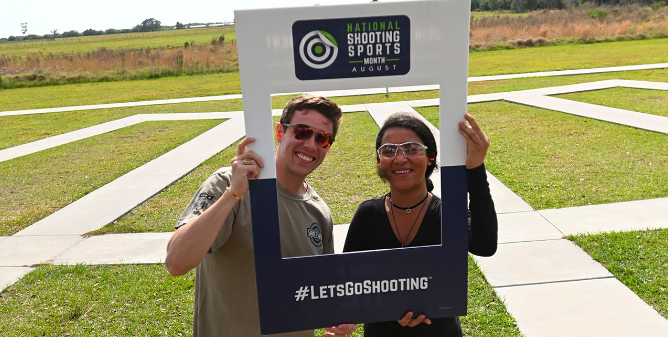
Printable Shooting Targets And Gun Targets
Printable shooting and gun targets allow you to sharpen your shooting skills at home or in the range. These targets come in all sizes to meet your needs. That is true whether you are preparing to face the big five during hunting or conducting law enforcement training. All you have to do is identify your preferred target, download it, and print it for your next shooting session.
Some of the best printable shooting targets and gun targets include:
| Item | Description |
| Laser Academy- Smart Targets |
|
| Laser Academy – Konami Target |
|
| B-21 Qualification Target (Blue) – All-Weather Resistant Target on Heavy Paper |
|
| 3-Gun Nation Practice Target (100 Pack) |
|
| Dirty Bird 17.25" 3-Gun Nation Splatter Target (100 Pack) | It features two scoring zones: an 8” primary or A zone and a 17.25” secondary or B zone.
The non-adhesive back allows you to fix it to any surface for shooting. |
| Alaska State Parks Bear Target | The brown target features a shaded hit-zone ring.
Size: 23” x 35” |
The Bottom Line
A lot goes into firing your first shot, whether you are using a firearm or a bow and arrow. Besides choosing the right equipment and shooting accessories, you must also invest in your gun-handling skills and strength. Luckily, you can easily improve your long-range shooting skills by incorporating the above secrets into your next training session.
Related Blogs: Understanding MOA and MILS: A Comprehensive Guide to Precision Shooting Measurements
Cedar Mill Fine Firearms provides a range of Rifle & Pistol Cases, Gun Case Locks, and AR-15 Accessories for firearm storage and protection.
